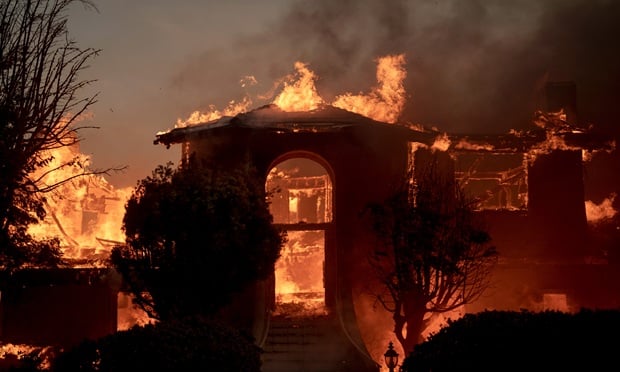The U.S. property and casualty insurance industry swung back into the black in the first quarter, reporting $8.9 billion in net income compared to a loss of $1.3 billion for the same period last year despite a lingering recession and soft market.
The $10.2 billion improvement in the industry's bottom line was the highlight of the latest quarterly report issued by the Insurance Services Office Inc. (www.iso.com) and the Property Casualty Insurers Association of America (www.pciaa.net).
The turnaround boosted the industry's annualized rate of return to 6.7 percent from negative-1.2 percent for the first quarter of 2009.
Insurers managed positive results despite a 1.3 percent drop in net written premiums, which were down $1.4 billion to $105.1 billion in the quarter.
The premium decline “reflects the ongoing consequences of a once-in-a-generation economic storm,” David Sampson, PCI's president and chief executive officer, said in a statement.
“In first-quarter 2010, seasonally adjusted total private-sector employment fell 2.7 percent compared with its level a year earlier, private-sector wages and salaries dropped 1.4 percent, and the average unemployment rate rose to 9.7 percent from 8.2 percent in first-quarter 2009,” he noted. “This challenging economic environment reduces demand for insurance.”
The increase in net income was powered by net investment gains that more than tripled–soaring $8.8 billion to $12.6 billion compared to the prior year's first quarter.
Insurers “performed well throughout the Great Recession due to key factors that set the industry apart, such as pursuing a conservative investment strategy,” observed Mr. Sampson.
Underwriting results also improved in the quarter, as net losses on underwriting fell close to 30 percent–down $800 million to $1.8 billion. Loss and loss adjustment expenses dropped 5.5 percent, down $4.3 billion to $74.5 billion in the quarter.
Better claim results translated into an improved combined ratio of 101.1 compared to 102.2 for the first quarter in 2009.
The report said policyholders' surplus–insurers' net worth measured according to Statutory Accounting Principles–rose $29.2 billion, or 5.7 percent, to $540.7 billion.
“The bottom line is that p&c insurance industry capacity is within 1 percent of its all-time record high just one year after reaching its crisis low…,” said Robert P. Hartwig, president of the Insurance Information Institute (www.III.org).
Mr. Sampson–a former deputy commerce secretary in the second Bush administration–added that the industry's strong first-quarter financial performance is “further proof that home, auto and business insurers are fiscally sound, that we have been strong and stable throughout the economic downturn of the last two years, and that we are able to pay claims to policyholders during their times of need.”
He added that the numbers point to an industry that can confidently handle the blows from the upcoming hurricane season.
However, Michael R. Murray, ISO's assistant vice president for financial analysis, cited numerous challenges facing insurers, including written premiums that have declined “for an unprecedented 12 consecutive quarters.” He also pointed out that the industry's 6.7 percent annual rate of return is 3.5 percentage points less than the 10.3 percent average annualized first-quarter figure based on data extending back to 1986.
“With the property and casualty industry not being hit as hard by the recession and financial crisis as some other sectors of the economy, and with the p&c industry recovering so quickly, it's easy to overlook the ongoing challenges facing insurers,” said Mr. Murray.
He warned that “because of today's low investment returns and the same long-term decline in investment leverage that helped insulate insurers from the financial crisis, insurers must now achieve better underwriting results just to be as profitable as they once were.”
He pointed out that in first-quarter 1996, insurers achieved a 12.4 percent annualized rate of return–nearly twice the result for 2010, despite a much higher combined ratio of 106.7.
Catastrophes striking the United States in first-quarter 2010 caused $2.6 billion in direct insured losses (before reinsurance recoveries) for all insurers (including residual market insurers and foreign insurers and reinsurers), according to ISO's Property Claim Services unit.
Direct insured catastrophe losses dropped $700 million in the first quarter compared to the $3.3 billion paid last year. “But the $2.6 billion in direct insured catastrophe losses in first-quarter 2010 was $800 million more than the $1.8 billion average for first-quarter direct catastrophe losses during the past 10 years,” ISO noted.
In his own commentary on the results (http://bit.ly/9u26ui), Mr. Hartwig called the report “a welcome beginning to the year after several years of tough quarters. The results also bode well for the full year.”
He noted that mortgage and financial guaranty insurers continue to have “a disproportionate impact on industry profitability”–while only accounting for 2 percent of the industry's premium, they ran a negative-65 percent annualized return on average surplus in the first quarter, as these two sectors posted a $1.8 billion net loss for the quarter. Excluding those insurers, Mr. Hartwig pointed out, the industry's return would have risen to 8.3 percent.
He added that “fundamentally, the property and casualty insurance industry remains quite strong financially, with capital adequacy ratios remaining high relative to long-term historical averages.”
However, Mr. Hartwig echoed the concerns cited by ISO's Mr. Murray in terms of an unsatisfactory rate of return and a decline in premiums written.
“The current profit recovery must be kept in perspective,” he said, noting that “softness in commercial insurance pricing remains a persistent problem for insurers.”
“Although the magnitude of price decreases gradually diminished–from the 13.8 percent drop recorded in the first quarter of 2008 to a decline of 5.1 percent in the first quarter of 2009–[commercial insurance] renewals over the past year have remained anchored in a range between negative-5 and [negative]-6 percent.”
While surveys by the Council of Insurance Agents and Brokers revealed a 5 percent first-quarter rise in auto insurance premiums, and homeowners premiums up 2.5-to-3 percent despite weakness in the housing market, “nevertheless, whatever modest gains the industry earned from higher rates were restrained by lingering economic weakness, cutting into the demand for most types of insurance,” he said.
Mr. Hartwig concluded that “persistent soft market conditions and the lingering effects of the deep recession continue to impact growth,” observing that “while insurers remain cautious about the economy and financial market conditions, there is guarded optimism that both will continue to improve as the industry moves through 2010.”
Want to continue reading?
Become a Free PropertyCasualty360 Digital Reader
Your access to unlimited PropertyCasualty360 content isn’t changing.
Once you are an ALM digital member, you’ll receive:
- Breaking insurance news and analysis, on-site and via our newsletters and custom alerts
- Weekly Insurance Speak podcast featuring exclusive interviews with industry leaders
- Educational webcasts, white papers, and ebooks from industry thought leaders
- Critical converage of the employee benefits and financial advisory markets on our other ALM sites, BenefitsPRO and ThinkAdvisor
Already have an account? Sign In Now
© 2024 ALM Global, LLC, All Rights Reserved. Request academic re-use from www.copyright.com. All other uses, submit a request to [email protected]. For more information visit Asset & Logo Licensing.








